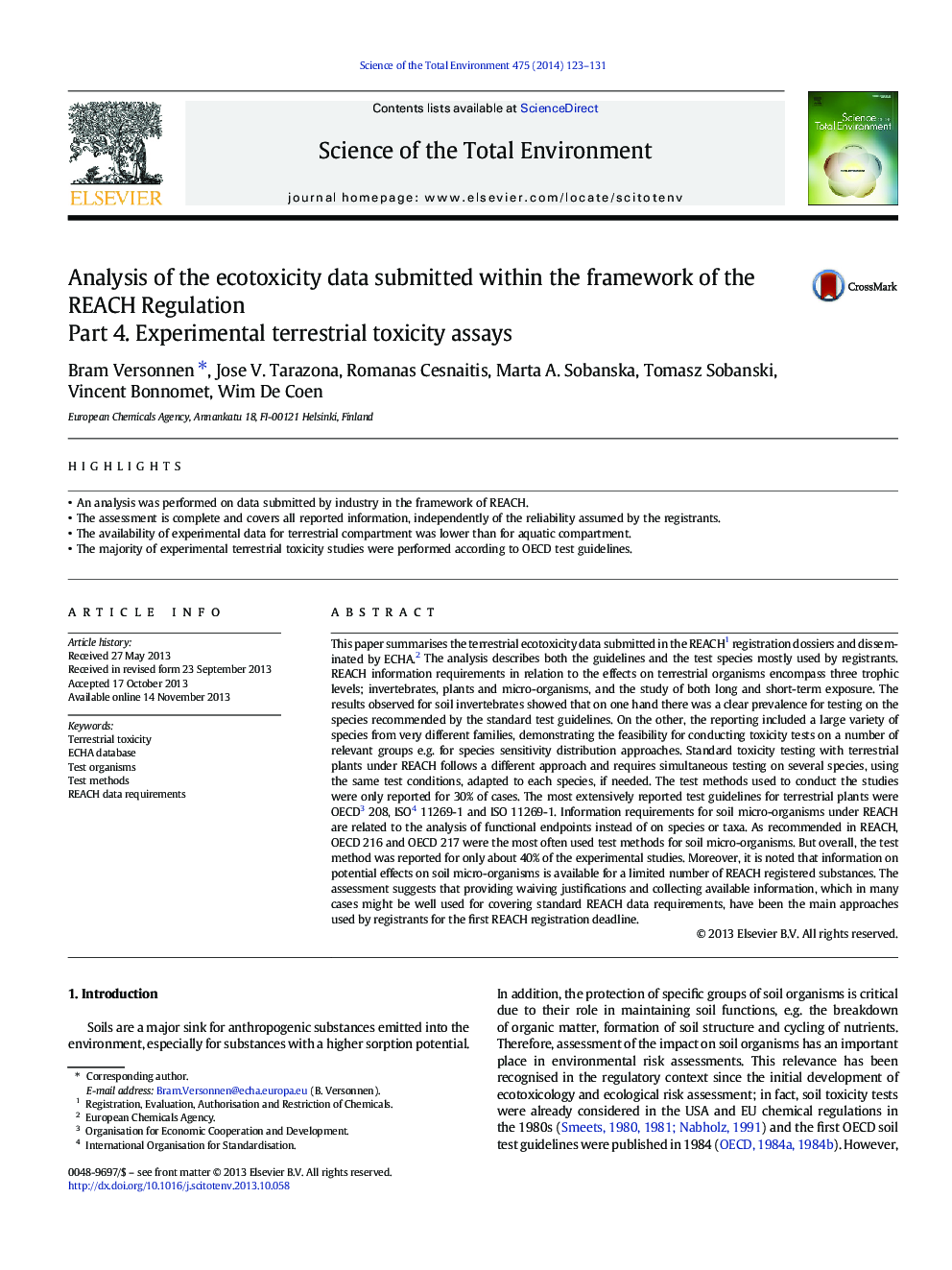| کد مقاله | کد نشریه | سال انتشار | مقاله انگلیسی | نسخه تمام متن |
|---|---|---|---|---|
| 6331553 | 1619790 | 2014 | 9 صفحه PDF | دانلود رایگان |
عنوان انگلیسی مقاله ISI
Analysis of the ecotoxicity data submitted within the framework of the REACH Regulation
دانلود مقاله + سفارش ترجمه
دانلود مقاله ISI انگلیسی
رایگان برای ایرانیان
موضوعات مرتبط
علوم زیستی و بیوفناوری
علوم محیط زیست
شیمی زیست محیطی
پیش نمایش صفحه اول مقاله

چکیده انگلیسی
This paper summarises the terrestrial ecotoxicity data submitted in the REACH1 registration dossiers and disseminated by ECHA.2 The analysis describes both the guidelines and the test species mostly used by registrants. REACH information requirements in relation to the effects on terrestrial organisms encompass three trophic levels; invertebrates, plants and micro-organisms, and the study of both long and short-term exposure. The results observed for soil invertebrates showed that on one hand there was a clear prevalence for testing on the species recommended by the standard test guidelines. On the other, the reporting included a large variety of species from very different families, demonstrating the feasibility for conducting toxicity tests on a number of relevant groups e.g. for species sensitivity distribution approaches. Standard toxicity testing with terrestrial plants under REACH follows a different approach and requires simultaneous testing on several species, using the same test conditions, adapted to each species, if needed. The test methods used to conduct the studies were only reported for 30% of cases. The most extensively reported test guidelines for terrestrial plants were OECD3 208, ISO4 11269-1 and ISO 11269-1. Information requirements for soil micro-organisms under REACH are related to the analysis of functional endpoints instead of on species or taxa. As recommended in REACH, OECD 216 and OECD 217 were the most often used test methods for soil micro-organisms. But overall, the test method was reported for only about 40% of the experimental studies. Moreover, it is noted that information on potential effects on soil micro-organisms is available for a limited number of REACH registered substances. The assessment suggests that providing waiving justifications and collecting available information, which in many cases might be well used for covering standard REACH data requirements, have been the main approaches used by registrants for the first REACH registration deadline.
ناشر
Database: Elsevier - ScienceDirect (ساینس دایرکت)
Journal: Science of The Total Environment - Volume 475, 15 March 2014, Pages 123-131
Journal: Science of The Total Environment - Volume 475, 15 March 2014, Pages 123-131
نویسندگان
Bram Versonnen, Jose V. Tarazona, Romanas Cesnaitis, Marta A. Sobanska, Tomasz Sobanski, Vincent Bonnomet, Wim De Coen,